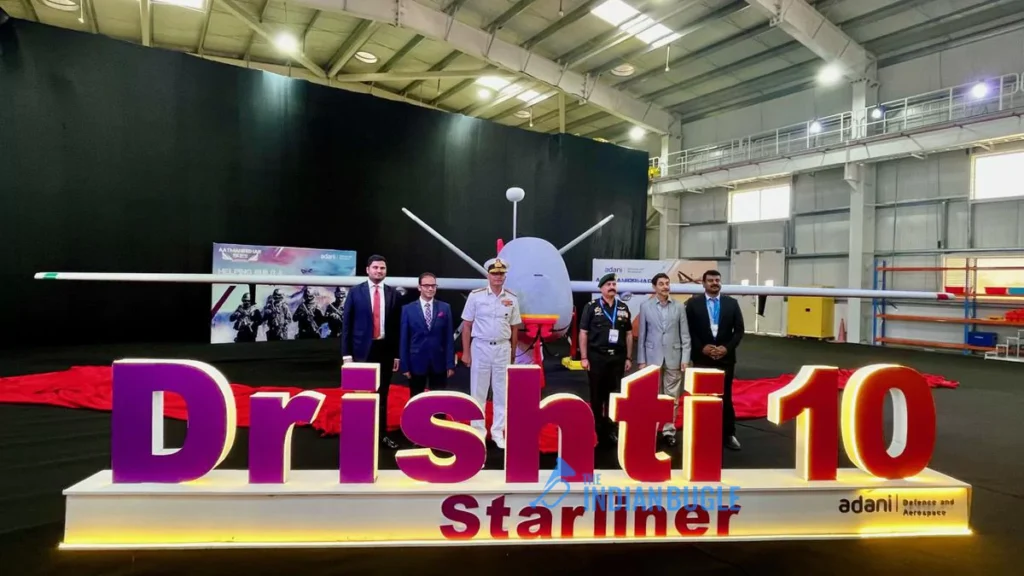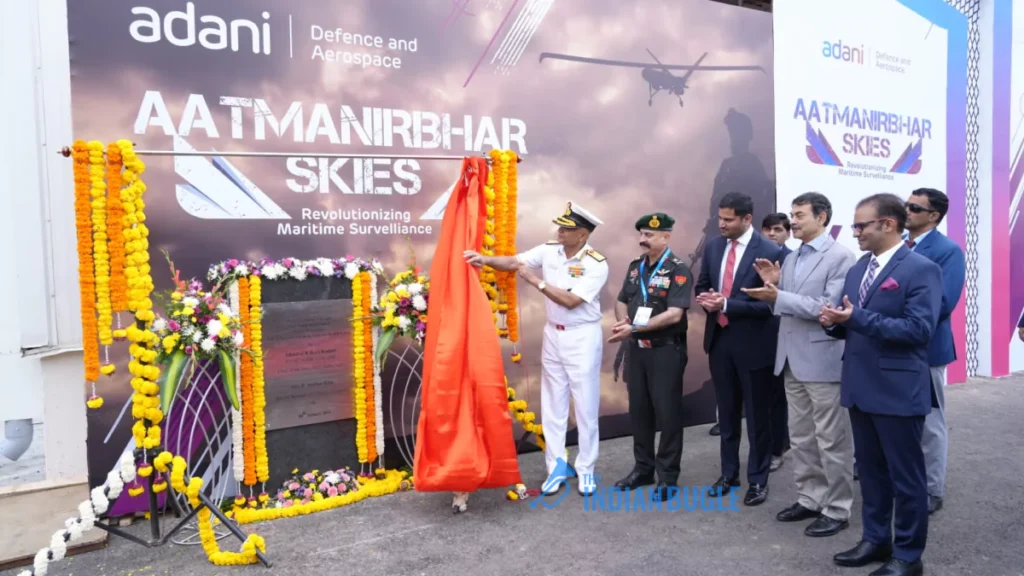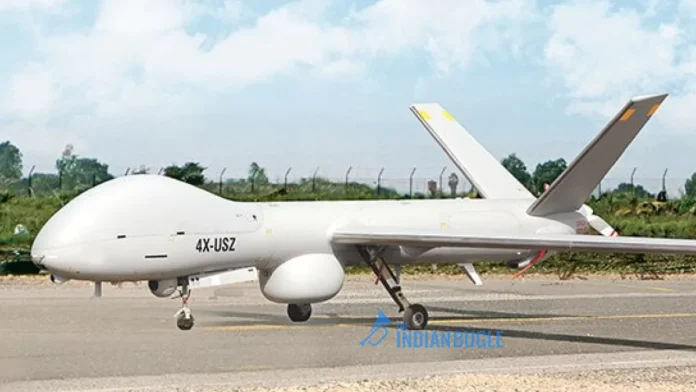January 11, 2024 : In a significant development for India’s defense capabilities, the Indian Navy has welcomed its first domestically manufactured medium-altitude long-endurance (MALE) drone, the Drishti 10 Starliner unmanned aerial vehicle (UAV). The drone, built by Adani Defence and Aerospace in Hyderabad with technology transfer from Israeli defense firm Elbit Systems, promises to enhance the navy’s intelligence, surveillance, and reconnaissance (ISR) capabilities.
Drishti 10 #Starliner' aerial vehicle (UAV) based on the Elbits Hermes 900 MALE (Medium Altitude Long Range) platform. Navel Personnel training is about to completed here in Hyderabad. #Drishti10 #IndianNavy #UAV @indiannavy @indiatvnews @AdaniDefence @ElbitSystemsLtd pic.twitter.com/fu0FfTwzbQ
— Manish Prasad (@manishindiatv) January 10, 2024
Potent Force Multiplier in the Indian Ocean Region
Navy Chief Admiral R Hari Kumar, during the unveiling ceremony in Hyderabad, emphasized the importance of the Drishti 10 Starliner drone as a potent force multiplier in addressing the security challenges prevalent in the Indian Ocean region. The unveiling marked a historic moment as it is the first major defense platform delivered to the Indian military by Adani.
Key Features and Capabilities
“With state-of-the-art sensors, enhanced endurance, advanced communication capabilities as well as new-age technologies like automatic take-off and landing, Drishti would be a potent force multiplier, adding capability and credibility in undertaking intelligence, surveillance and reconnaissance (ISR) across the Indian Ocean region,” remarked Admiral Kumar.
The Drishti 10 Starliner, boasting 70% indigenous content, offers a 36-hour endurance and can carry a payload of 450 kg. It is equipped with three hard points, allowing for potential weaponization if required, and operates at a service ceiling of 30,000 feet.
Addressing Naval Challenges
The Indian Navy faces various challenges, including China’s strategic moves in the region, defending international order, and emerging tensions in the Red Sea. To counter these challenges, the navy has increased surveillance in the Arabian Sea, deploying task groups and utilizing various assets such as P-8I maritime surveillance aircraft, Sea Guardian remotely piloted aircraft, Dorniers, helicopters, and coast guard ships.


Enhanced Versatility and Mobility
Admiral Kumar highlighted the versatility and flexibility of the Drishti 10 Starliner, allowing the navy to operate the drones from naval air stations across the country. This capability provides an added layer of mobility and modularity to ground support equipment.
Self-Reliance in ISR Technology
Jeet Adani, Vice President of Adani Enterprises, emphasized the significance of ISR platforms for Adani in serving the armed forces and positioning India on the global map for exports. Adani Defence and Aerospace CEO Ashish Rajvanshi commended the on-time delivery of the UAV, showcasing robust quality management processes.
Looking Ahead
Admiral Kumar expressed his optimism, stating, “May Drishti be our third eye in the sky, providing us battlefield transparency with incisive clarity, enabling the navy to score a bulls-eye on anyone who dares cast an evil-eye at the nation and our citizens.”
The Defence Research and Development Organisation is concurrently working on a MALE UAV called Tapas, while India is also in the process of acquiring 31 MQ-9B remotely piloted aircraft systems (RPAS) from the US to bridge technological gaps.
As India continues to strengthen its defense capabilities, the induction of the Drishti 10 Starliner marks a significant step towards self-reliance in ISR technology and maritime supremacy.
